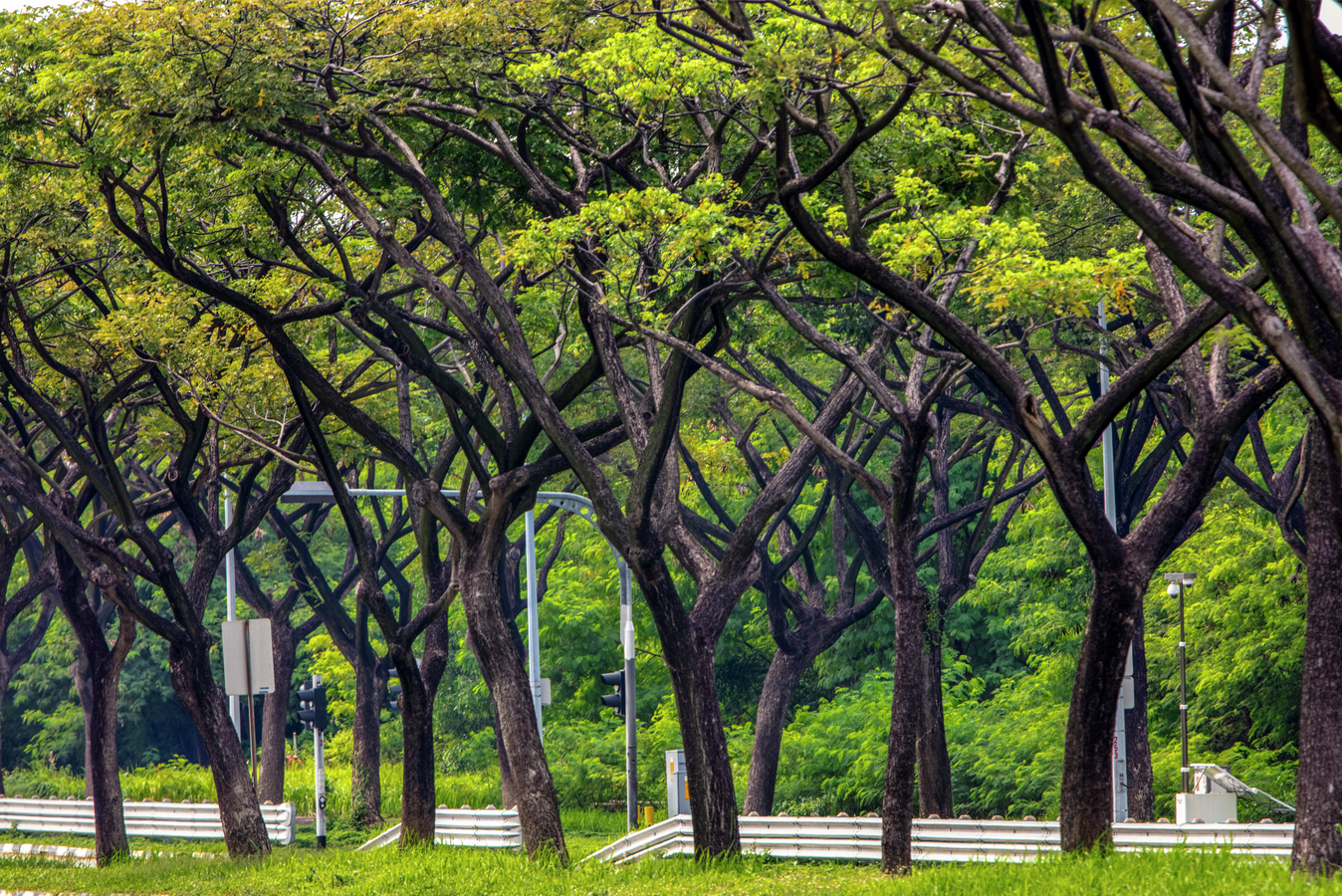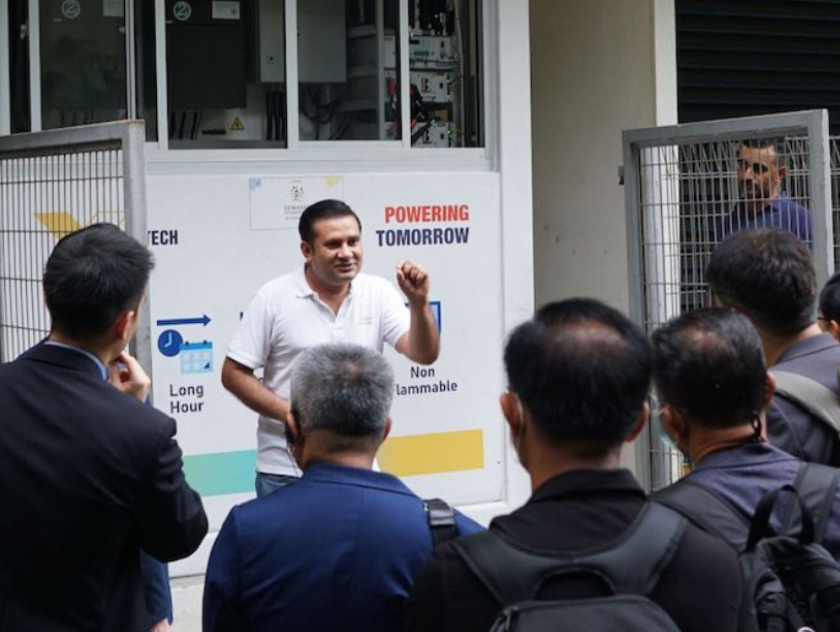
The year is 2050. Asia – which now runs on mainly renewable energy sources, captures carbon emissions, and continues to price and tax companies that emit greenhouse gases – has successfully transitioned to net zero.
Singapore has played a strong role in supporting and partnering Asia through its decarbonisation journey.
The jury is still out on whether this scenario could become reality. But it is a goal that Singapore continues to pursue.
Two years ago, Singapore launched its Green Plan 2030 to demonstrate its commitment to sustainable development. Last year, we committed to achieving net-zero emissions by 2050.
Since then, we have made some headway, from introducing incentives to encourage businesses to be more energy-efficient to diversifying our sources of clean energy through electricity imports. Our long-term goal is to import 4 gigawatts of low-carbon electricity by 2035, which will make up 30 per cent of Singapore’s electricity supply by then.
But there is much more to be done. For example, we are working to develop enabling technologies, such as in carbon capture, and exploring regional partnerships to build a hydrogen supply chain in Asia, to scale our deployment of clean technologies to get us to net zero.
At the same time, as South-east Asia’s governments and corporates embrace sustainable economic growth, there will be significant economic opportunities in green growth areas. The 2022 Green Economy report by Bain states that the South-east Asian region presents an annual green economic opportunity of up to US$1 trillion by 2030, across manufacturing and services in areas like agrifood, electric mobility, solar and nature-based solutions.
Taking stock
In 2019, Singapore became the first South-east Asian country to announce a carbon tax. We engaged businesses early and launched a transition framework to support companies to reduce their own emissions and navigate these changes. The government made clear that the carbon tax was not a means of deriving additional revenue in this decade but to support decarbonisation efforts and cushion the impact on businesses and households. The tax covers 80 per cent of Singapore’s emissions and sends a clear price signal to induce greater decarbonisation.
Subsequently, we have announced other policies to move forward with our decarbonisation efforts. One project we view with importance is Jurong Island, which we are transforming into a sustainability-focused energy and chemicals park (“Sustainable Jurong Island”).
Through “Sustainable Jurong Island”, we aim to abate more than six million tonnes of carbon per year via low-carbon solutions and quadruple the island’s output of sustainable products, such as bio-based fuels, from 2019 levels by 2050.
We aim to achieve this through the efforts of more than 100 leading companies in the energy, petrochemical, and specialty chemicals sectors on Jurong Island.
One such example is Arkema, a global leader in specialty materials, which plans to produce Rilsan polymer – a robust high-performance and chemical-resistant polymer capable of withstanding high temperatures – from castor beans, a renewable and sustainable raw material.
We are working with companies and research institutes through the Low-Carbon Energy Research Funding Initiative to develop and enhance existing decarbonisation technologies. As these technologies will have to be piloted and scaled, we are studying the potential of having a Low Carbon Technologies Translational Testbed on Jurong Island.
This aims to be a plug-and-play facility, making it easy for companies to scale new technologies in the field of carbon utilisation and low-carbon hydrogen.
Singapore’s strengths – our strategic location in the region and strong partnerships with industry to develop innovative sustainable solutions – put us in a good position to support Asia’s decarbonisation journey and seize growth opportunities along the way.
In the heart of South-east Asia, Singapore is well placed to support the region unlock its significant potential in renewable energy. Poised to be the world’s fourth largest economy by 2030 with a growing population of 500 million, the region’s energy needs will be immense.
Scaling of renewable power generation such as solar and wind will be key to achieving net-zero targets in South-east Asia, while meeting the region’s growing power demand. Singapore is a solar hub for Asia, with more than 100 international and local clean energy companies based here.
Our deep ecosystem with players across the value chain – ranging from R&D providers, project and legal advisories to Energy Storage System (ESS) system integrators – also supports renewable energy companies in developing and executing projects in the region.
Singapore is also preparing for a future where low-carbon hydrogen forms a significant part of our fuel mix. We are embarking on a project to develop an end-to-end low carbon ammonia power generation and bunkering solution in Singapore.
Apart from helping to secure our clean energy future, this project will also enhance Singapore’s maritime hub status as ammonia is emerging as a potential alternative fuel for shipping.
Singapore has also made headway in the development of biofuels. These fuels are produced from wastes and residues such as used cooking oil and animal fats, and have a lower greenhouse gas footprint. Sustainable aviation fuel (SAF), for example, can reduce greenhouse gas emissions by up to 80 per cent compared to conventional jet fuel.
We are proudly the world’s largest producer of SAF, thanks to renewable fuels producer Neste. In April 2023, the company expanded the capacity of its refinery, doubling its production capacity and is now able to produce up to a million tonnes of SAF each year.
Singapore is also emerging as Asia’s carbon services and trading hub. Our city has the highest concentration of carbon service providers in South-east Asia, with many providers drawn to our pro-business environment, proximity to demand opportunities and collaborative ecosystem.
We are home to key organisations that work in the field of climate change and carbon markets including South Pole, The Nature Conservancy and Carbon Trust, and more than 100 other companies that use Singapore as a regional gateway to provide carbon services in Asia.
Beyond carbon services and offsets, we are also leveraging our position as a green finance hub to drive investments in low-carbon solutions in Asia.
Investing in talent
The growing green economy is creating meaningful job opportunities for locals to contribute to a more sustainable future from Singapore. From providing low-carbon advisory services to developing clean energy solutions such as solar, Singaporeans, from fresh grads to mid-career hires, are expressing keen interest in participating in these new and emerging roles.
For our green economy to thrive, we will need to upskill and empower more Singaporeans to take on related roles. In the past few years, initiatives have been put in place to ensure that we have the right talent for this growing industry.
For example, Workforce Singapore’s (WSG) Career Conversion Programme for Sustainability Professionals is helping to reskill Singaporeans for sustainability careers through courses and on-the-job training.
We also welcome global talent with specialised skill sets in carbon under our upcoming employment pass framework. We want Singaporeans to gain a competitive advantage through working alongside international experts, which we are supporting through WSG’s Capability Transfer Programme.
The continued momentum for climate action is an economic opportunity for South-east Asia. Singapore can play a role by supporting businesses in accessing financing, key markets and talent to meet the needs of this growing green economy.
We also have a major role to play in accelerating the commercialisation of new sustainability technologies in partnership with international companies of all sizes and stripes – including venture-backed startups.
If solutions developed in Singapore can catalyse the green transition efforts of our partners, be they corporates or governments, globally – then there is a fighting chance that our vision for 2050 can become reality, to move the needle on global net-zero transition.
The writer is executive vice-president at the Singapore Economic Development Board
This article was published in The Business Times on 26 August 2023, and is republished with the writer’s permission.
